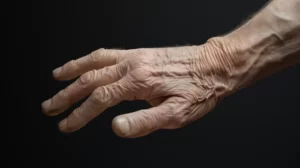Have you ever stopped to consider what’s lurking in your soap? A chemical called triclosan, found in many household items like cosmetics, toothpaste, and cleaners, has been linked to promoting the growth of breast cancer cells. Keep reading to learn about the adverse effects of triclosan and what you can do to protect yourself and your loved ones.
The Dangers of Triclosan
Triclosan is an antimicrobial that is often used to make soap “antibacterial.” It is also commonly found in toothpaste and cosmetics. Korean scientists conducted lab tests on breast cancer cells and animals, revealing that triclosan impacts the genes driving breast cancer cell growth. The result of exposure to triclosan was faster-growing tumors.
The scientists also examined the effects of another chemical, octylphenol, which is frequently added to paint and other products. When lab animals were exposed to both triclosan and octylphenol, their tumors were larger and denser. Kyung-Chul Choi, one of the researchers, explained that the high doses of endocrine-disrupting chemicals (EDCs) used in the study were designed to simulate the effects of daily exposure as well as the consequences of long-term exposure.
In conclusion, the study’s findings suggest that exposure to EDCs significantly heightens the risk of breast cancer development and poses a threat to human health.
Triclosan and Hormone Disruption
Another crucial concern regarding triclosan is its potential to disrupt hormone function. According to a study published by the National Institute of Environmental Health Sciences, triclosan may interfere with the thyroid hormone, leading to adverse consequences for metabolism, brain development, and overall health.
The Environmental Impact
Triclosan is not only hazardous to human health but also detrimental to the environment. When washed down the drain, this persistent chemical accumulates in the environment and poses a threat to aquatic life. The Environmental Working Group, a nonprofit organization that specializes in research and advocacy, has stated that triclosan’s environmental persistence and potential risks outweigh its benefits as an antimicrobial agent.
Alternatives to Triclosan
Thankfully, many safer alternatives to triclosan are available. Here are a few tips on how to avoid triclosan and protect yourself from its harmful effects:
- Check Labels: Be vigilant about reading product labels and avoid those containing triclosan. The Food and Drug Administration (FDA) has banned the use of triclosan in hand soaps, but it may still be present in toothpaste, mouthwash, cosmetics, and cleaning products.
-
Wash Your Hands: Washing your hands with regular soap and water is just as effective as using antibacterial soap, according to the FDA. Opt for natural and fragrance-free soaps to minimize exposure to harmful chemicals.
-
Choose Natural Toothpaste: Look for natural toothpaste that is free of triclosan. The Environmental Working Group’s Skin Deep database is a helpful resource for finding safer alternatives.
-
Avoid Plastic Cutting Boards: Triclosan may be present in plastic cutting boards, so opt for wooden boards instead.
-
Practice Safe Food Handling: To minimize your risk of bacterial contamination, practice proper food handling techniques such as washing your hands, utensils, and surfaces; cooking food to the correct temperature; and refrigerating leftovers promptly.
In conclusion, we can take control of our health and safeguard our families by being mindful of the products we use daily. By paying attention to labels and opting for natural alternatives, we can reduce our exposure to harmful chemicals like triclosan and promote a healthier lifestyle for ourselves and future generations.



